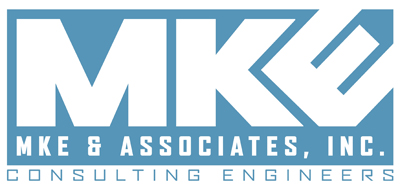MKE & Associates, Inc Consulting Engineers
The MKE Approach
1 - Understand Scope
We develop a complete and well-understood scope, the result of careful conversation with the client to determine exact needs, keeping us focused and sensitive to the requirements of the client. If maintenance or user staff is involved, we seek permission to discuss scope with them as well.
2 - Establish A Budget
Often a budget is established in advance; other times a budget is unknown and needs to be crafted. Either way, MKE will help evaluate a budget to determine when the project can be started with reasonable expectations of successful conclusion. Should a discrepancy arise between anticipated scope and budget, MKE will flag it immediately and enter into a discussion on value engineering with the client.
3 - Evaluate Options
Several system choices or methods are available to accomplish goals; MKE has found that presenting these options to the client leads to a successful result. At many times, client staff offers important input from the standpoint of maintenance, reliability, operating costs, and ease of use. MKE will present system pros and cons, life-cycle cost, and first cost analysis. Clear explanation of system performance and capabilities is crucial to protect the client and MKE from expectations that do not line up...the end of a project is too late to find out about disappointment due to expectations not previously qualified or discussed.
MKE has found that presenting these options to the client leads to a successful result.

4 - Verify Costs
Project cost runs can occur subtly and in small increments, so just prior to construction documents MKE will confirm the project can be constructed within the confines of the original scope and budget.
5 - Conduct Regular Coordination
MKE finds that design documents going out to bid will have issues and change orders in direct proportion to how often the key disciplines coordinate design efforts and review documents for conflict. Depending on the project, design coordination meetings should occur from a minimum of 30%, 60%, and 90% review to multiple meetings per month. Our in-house review will precede client review for the sake of efficiency.
6 - Establish Relationships
Quick response to questions and a helpful attitude ensures cooperative relationships with contractors that allows for field work to progress smoothly. Our disposition toward a contractor is that of a partner, not an adversary.
